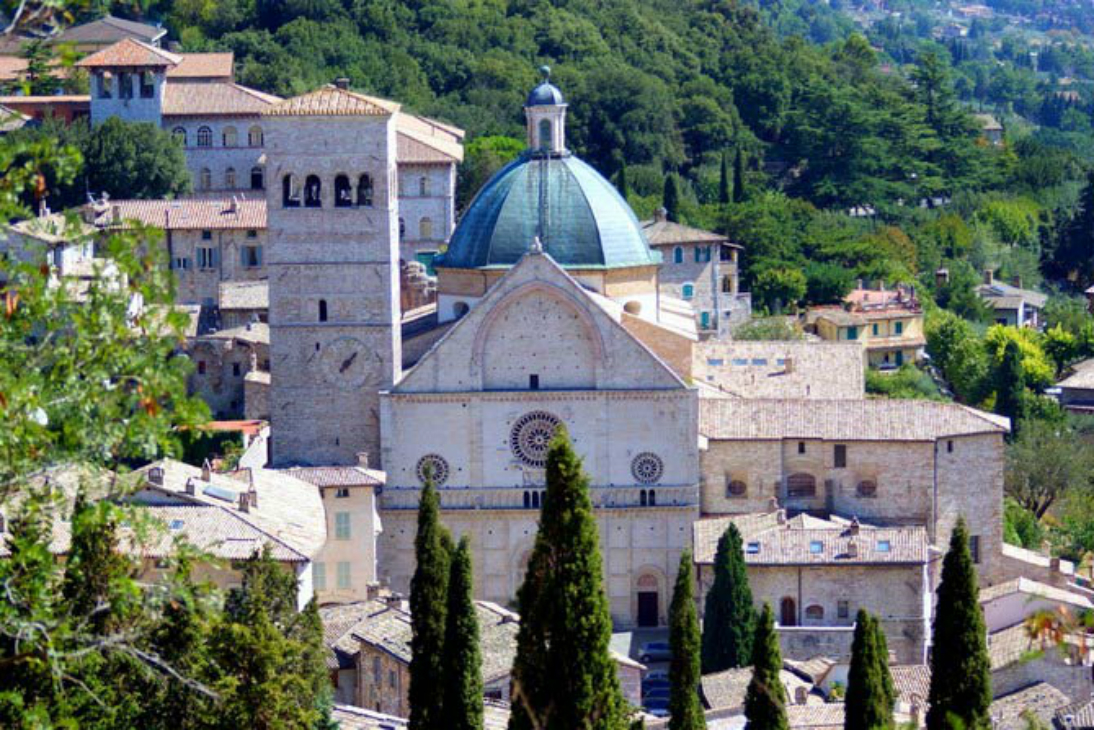
Assisi is a town and comune of Italy in the province of Perugiain the Umbria region, on the western flank of Monte Subasio. It was the birthplace of St. Francis, who founded the Franciscan religious order in the town in 1208, and St. Clare (Chiara d’Offreducci), the founder of the Poor Sisters, which later became the Order of Poor Clares after her death. The 19th-century Saint Gabriel of Our Lady of Sorrows was also born in Assisi. UNESCO collectively designated the Franciscan structures of Assisi as a World Heritage Site in 2000.
The Basilica of San Francesco d’Assisi (St. Francis). The Franciscan monastery, il Sacro Convento, and the lower and upper church (Italian: Basilica inferiore and Basilica superiore) of St Francis were begun immediately after his canonization in 1228, and completed in 1253. The lower church has frescoes by the late-medieval artists Cimabue and Giotto; the upper church houses frescoes of scenes in the life of St. Francis previously ascribed to Giotto, but now thought to be by artists of the circle of Pietro Cavallini from Rome. The Basilica was badly damaged by an earthquake on 26 September 1997, during which part of the vault collapsed, killing four people inside the church and carrying with it a fresco by Cimabue. The edifice was closed for two years for restoration. Assisi has had a rich tradition of art through the centuries and is now home to a number of well known artistic works.
Artists Pietro Lorenzetti and Simone Martini worked shoulder to shoulder at Assisi. The Basilica of San Francesco d’Assisi includes a number of artistic works. Simone Martini’s 1317 fresco there reflects the influence of Giotto in realism and the use of brilliant colors. Lorenzetti’s fresco at the lower church of the Basilica includes a series of panels depicting the Crucifixion of Jesus, Deposition from the Cross, and Entombment of Christ. The figures Lorenzetti painted display emotions, yet the figures in these scenes are governed by geometric emotional interactions, unlike many prior depictions which appeared to be independent iconic aggregations. Lorenzetti’s 1330 Madonna dei Tramonti also reflects the ongoing influence of Giotto on his Marian art, midway through his career. Festival Calendimaggio, held on 1–5 May, is a re-enactment of medieval and Renaissance life in the form of a challenge between the upper faction and the lower faction of the town. It includes processions, theatrical presentations, flag-weavers and dances. Assisi Embroidery is a form of counted-thread embroidery which has been practised in Assisi since the 13th century. Today the town has many groups coming to enjoy the simple peace of St. Francis. One such group has restored an 11th-century room and added altars to the world’s religions. Other organizations, such as Assisi Performing Arts, complement Assisi’s tranquility with music and other cultural events.



